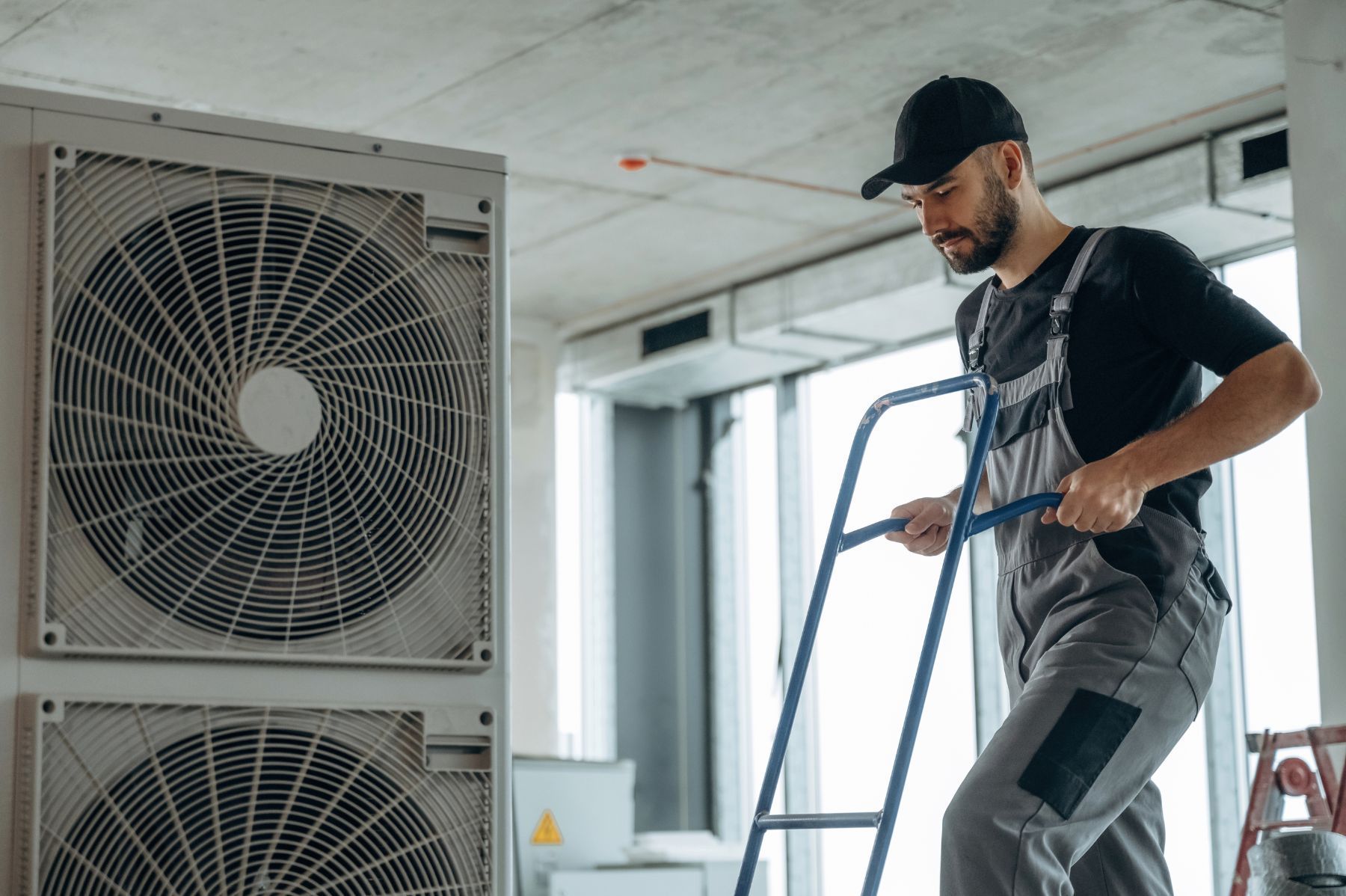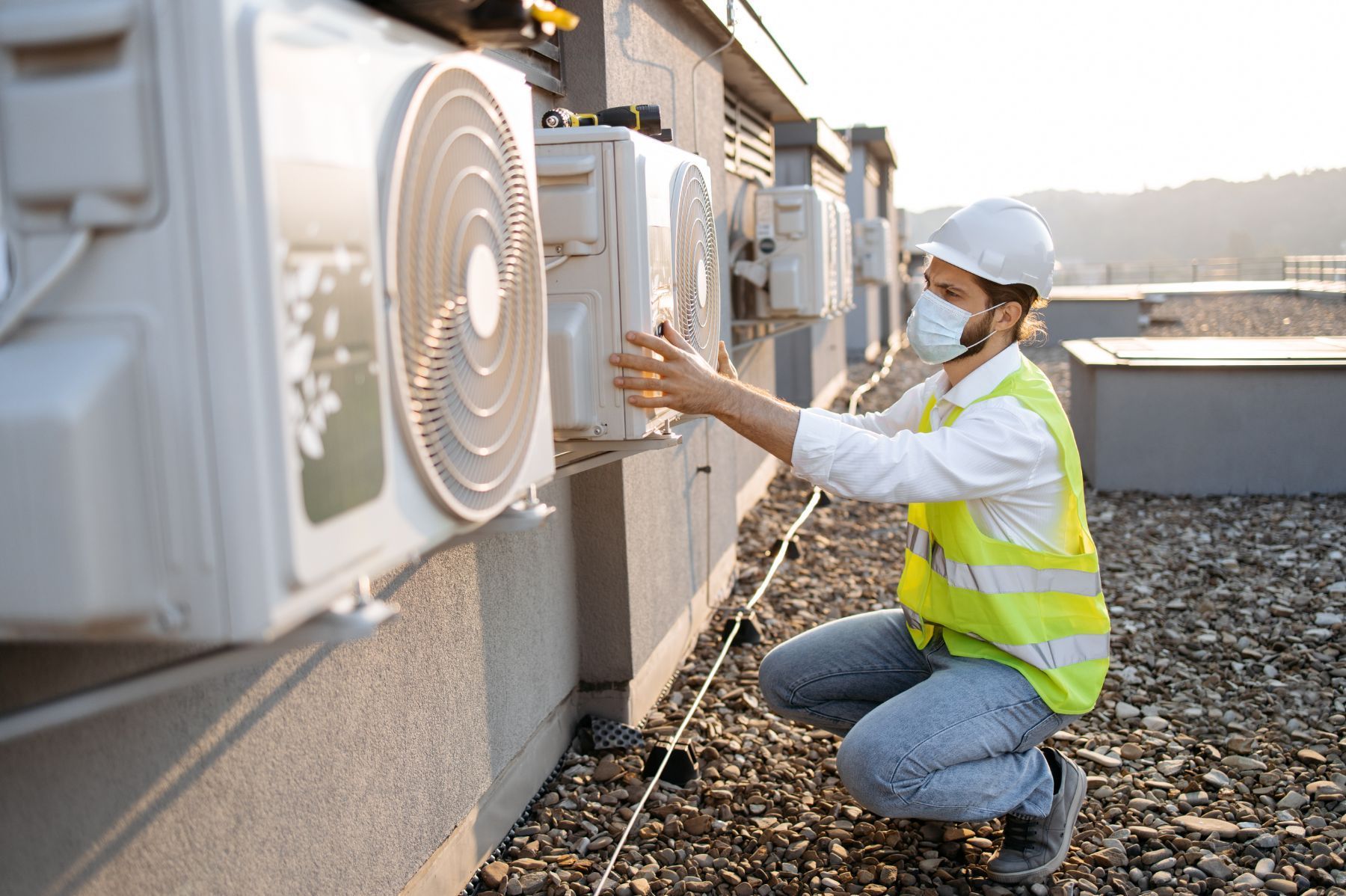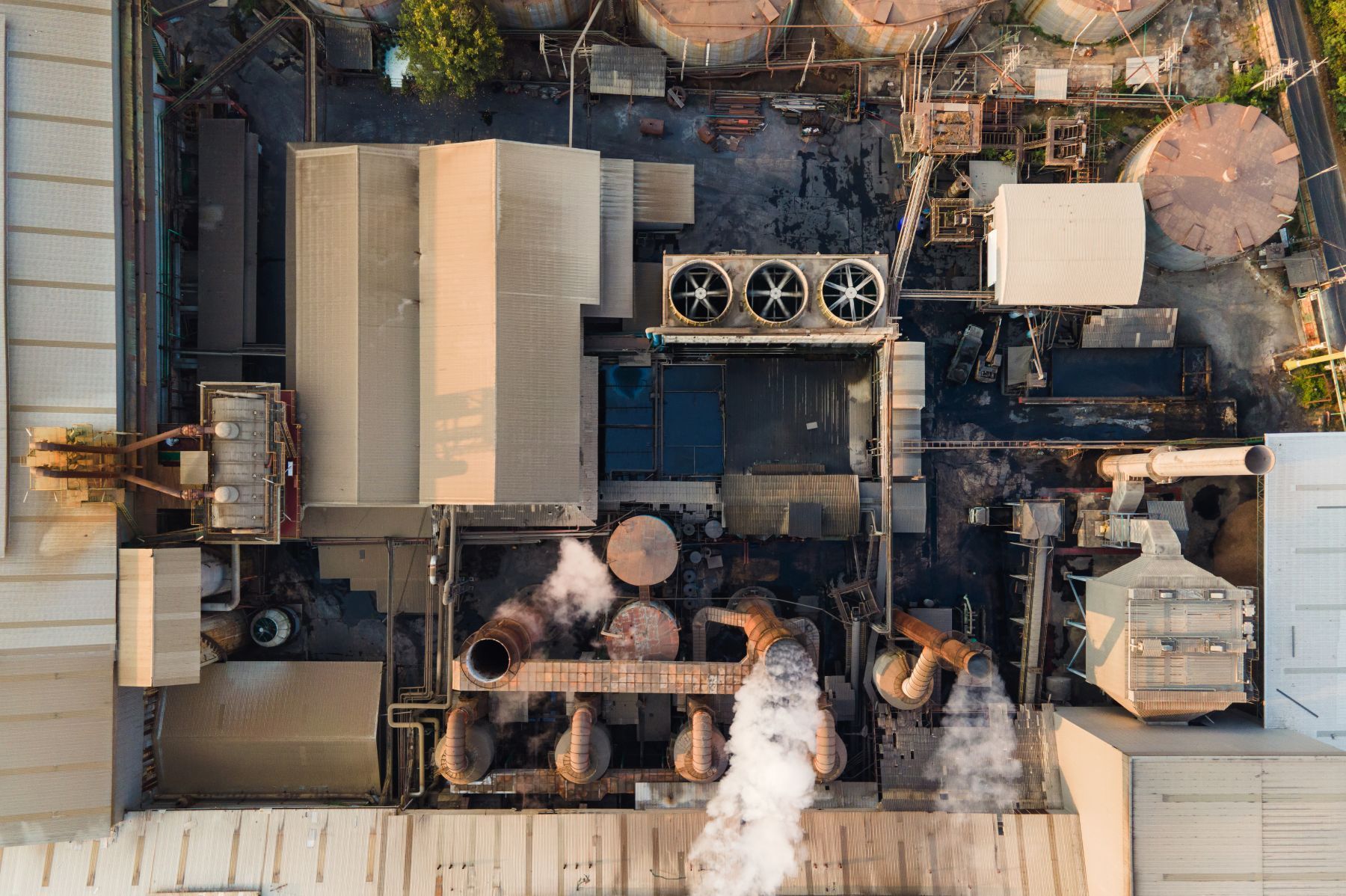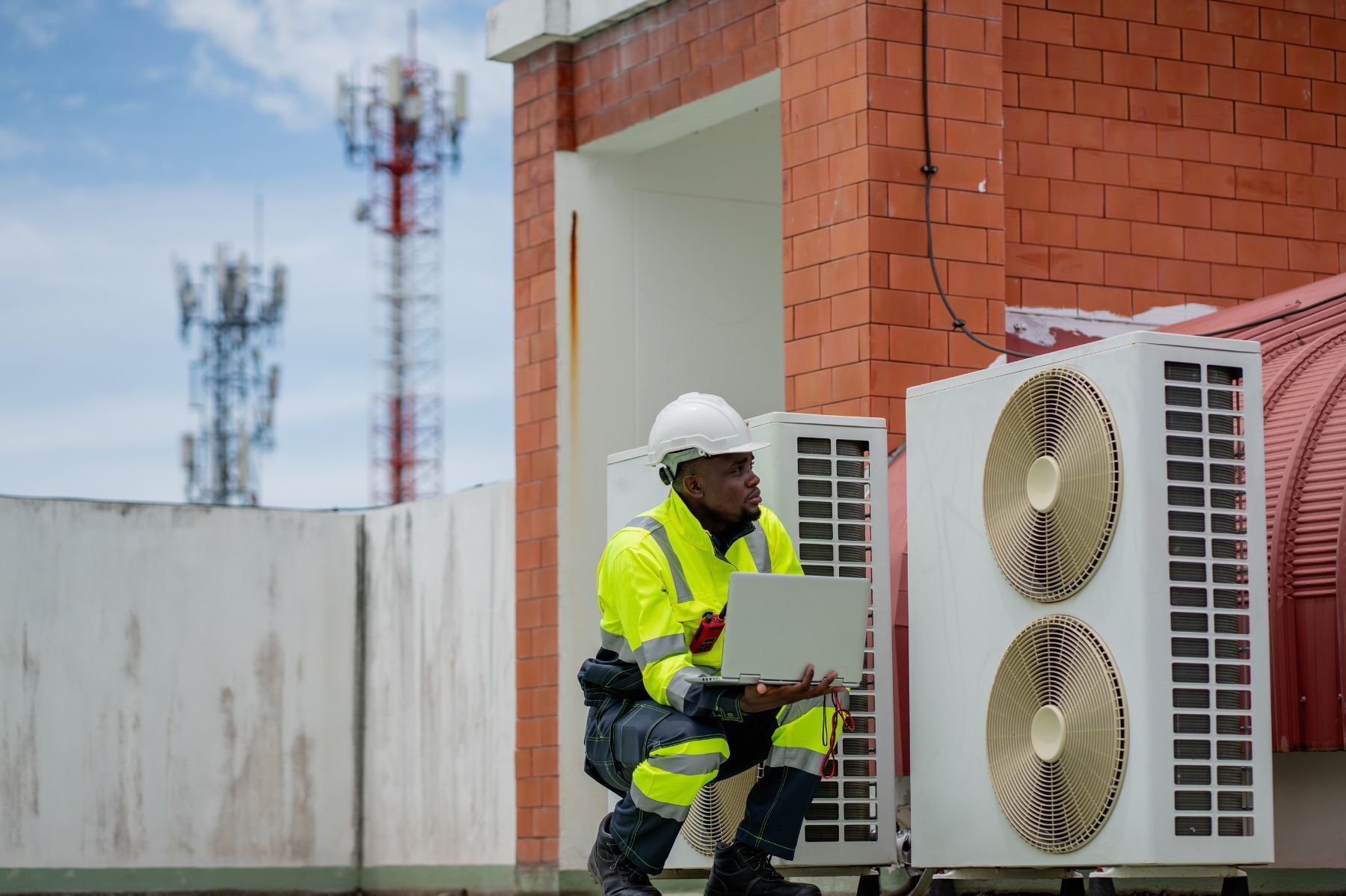What OSHA Violations Can Teach HVAC Contractors About Risk & Insurance
See How We're Different
or call us: (469) 678-8001

For HVAC contractors, understanding workplace safety is not just about compliance—it's about protecting lives, managing risks, and controlling insurance costs. The construction industry, which includes HVAC work, consistently ranks among the most hazardous sectors in the U.S., with falls and other accidents leading the list of workplace injuries and fatalities. By examining the most common OSHA violations and the lessons they offer, HVAC contractors can better navigate the complex landscape of risk management and insurance.
According to OSHA's reports, "Fall Protection – General Requirements" has been the top cited violation for over a decade, highlighting a persistent challenge in construction safety. This article explores key OSHA violations relevant to HVAC contractors and how these insights can inform better risk mitigation strategies and insurance planning.
Understanding OSHA’s Top Violations and Their Impact on HVAC Work
OSHA’s annual violation reports reveal recurring safety issues that directly affect HVAC contractors. Among these, fall protection violations dominate due to the nature of HVAC work, which often involves working at heights on rooftops, ladders, and scaffolding. In fiscal year 2023 alone, OSHA issued 7,271 citations for fall protection violations, making it the most frequently cited safety breach across the construction sector.
Falls are not just a compliance issue—they are a leading cause of fatalities. The roofing industry, closely related to HVAC roofing work, reported a fatality rate of 59 per 100,000 full-time workers in 2021, which is dramatically higher than the overall construction fatality rate. Nearly 80% of these fatalities were due to falls, underscoring the critical need for effective fall protection measures.
For HVAC contractors, this means that investing in robust fall protection systems and training is essential—not only to comply with OSHA but to reduce the risk of costly accidents that can lead to severe injuries or death. These incidents also have a direct impact on insurance premiums and liability exposure.
Fall Protection: More Than Just a Regulatory Requirement
Fall protection violations include failures to provide guardrails, safety nets, personal fall arrest systems, or adequate training on their use. OSHA’s data shows that in fiscal year 2024, there were over 2,100 citations issued specifically for fall protection training deficiencies, resulting in nearly $5 million in penalties.
For HVAC contractors, this highlights the importance of not only having the right equipment but ensuring that all workers are properly trained. Insurance providers often look favorably on companies that demonstrate proactive safety training programs, which can translate into lower premiums and better coverage terms.
Moreover, the implementation of comprehensive safety protocols can foster a culture of safety within the organization. When employees feel that their safety is prioritized, they are more likely to adhere to safety practices and report potential hazards. This proactive approach not only minimizes the risk of accidents but can also enhance employee morale and retention, as workers appreciate being part of a company that values their well-being. Regular safety meetings and refresher courses can further reinforce this culture, keeping safety at the forefront of daily operations.
Additionally, the financial implications of safety violations extend beyond immediate penalties. Companies that experience workplace accidents may face increased operational costs due to downtime, medical expenses, and potential legal fees. Furthermore, a poor safety record can tarnish a company's reputation, making it challenging to secure future contracts or attract skilled labor. Therefore, HVAC contractors must view safety not merely as a regulatory obligation but as a critical component of their business strategy that can drive long-term success and sustainability.
Risk Management Through Compliance: Beyond Fall Protection
While fall protection is the most cited violation, HVAC contractors face other significant risks that OSHA highlights through its citations. For example, violations related to ladders, scaffolding, and personal protective equipment (PPE) are also common and carry substantial penalties.
In fiscal year 2024, OSHA issued 2,681 citations for ladder violations, totaling $9.5 million in penalties. Ladders are a daily tool for HVAC technicians, and improper use or faulty equipment can lead to falls or injuries. Similarly, scaffolding violations resulted in 1,835 citations and $6.7 million in penalties, emphasizing the need for proper assembly and inspection. The importance of training cannot be overstated; ensuring that all employees are well-versed in the correct usage and maintenance of ladders and scaffolding can significantly reduce the likelihood of accidents. Regular safety audits and refresher courses can reinforce best practices and keep safety at the forefront of daily operations.
Personal protective equipment, particularly eye and face protection, is another critical area. OSHA’s reports show over 2,000 citations for inadequate PPE, with $7 million in penalties in 2024 alone. HVAC work often involves exposure to dust, chemicals, and flying debris, making PPE indispensable for worker safety. The selection of appropriate PPE is crucial; for instance, using goggles that meet ANSI standards can prevent serious eye injuries. Additionally, fostering a culture where employees feel empowered to speak up about unsafe conditions or inadequate PPE can lead to a more proactive approach to safety, ultimately benefiting both workers and the company.
Insurance Implications of Non-Compliance
Insurance companies assess risk based on a contractor’s safety record and compliance history. Frequent OSHA violations can lead to higher premiums, reduced coverage, or even denial of insurance. Conversely, a strong safety culture that addresses ladder safety, scaffolding protocols, and PPE use can mitigate risks and improve insurance terms. Insurers are increasingly looking for evidence of safety training programs and compliance audits as part of their underwriting process, which means that investing in these areas can yield financial benefits.
Moreover, non-compliance can lead to costly workers’ compensation claims and liability lawsuits. HVAC contractors who invest in comprehensive safety programs not only protect their workforce but also shield their business from financial losses associated with accidents. The ripple effects of a single incident can be far-reaching, impacting not just immediate costs but also long-term relationships with clients and stakeholders. By prioritizing compliance and safety, contractors can enhance their reputation in the industry, attract more clients, and ultimately drive business growth. Furthermore, embracing technology such as safety management software can streamline compliance efforts and provide real-time data to help identify and mitigate risks before they escalate into serious issues.
Training and Documentation: The Cornerstones of Risk Reduction
One of the most cited violations relates to inadequate training, particularly concerning fall protection. OSHA issued over 2,100 citations for fall protection training failures in fiscal year 2024, highlighting a widespread gap in worker education.
For HVAC contractors, thorough and documented training programs are vital. Training should cover hazard recognition, proper use of fall arrest systems, ladder safety, PPE, and emergency procedures. Documentation of these training sessions is equally important, as it serves as evidence of compliance during OSHA inspections or insurance audits.
Investing in regular refresher courses and keeping records up to date can significantly reduce the risk of violations and accidents. Insurance companies often require proof of such training before offering favorable policy terms.
Leveraging Technology for Training and Safety
Modern HVAC contractors can leverage digital platforms and mobile apps to deliver interactive safety training and track compliance. These tools help ensure that all employees receive consistent instruction and that training records are easily accessible.
Additionally, technology such as wearable fall detection devices and equipment sensors can provide real-time monitoring to prevent accidents. Such innovations demonstrate a commitment to safety that insurers recognize as a risk-reducing factor.
Moreover, the integration of virtual reality (VR) into training programs is gaining traction in the HVAC industry. VR simulations allow workers to experience realistic scenarios in a controlled environment, enhancing their ability to respond effectively to hazardous situations. This immersive training can lead to better retention of safety protocols and a deeper understanding of potential risks on the job site.
Furthermore, utilizing data analytics can help contractors identify trends in safety incidents and training effectiveness. By analyzing this data, companies can tailor their training programs to address specific weaknesses, ensuring that employees are not only compliant but also well-equipped to handle the challenges they face in the field. This proactive approach not only enhances workplace safety but also fosters a culture of continuous improvement within the organization.
Financial Consequences of OSHA Violations and Insurance Risks
OSHA violations come with hefty financial penalties. In fiscal year 2024, the construction industry faced over $119 million in penalties, with a significant portion related to fall protection, ladders, and PPE violations. For HVAC contractors, these fines can severely impact profitability and cash flow. The financial implications extend beyond immediate fines; they can also affect a company's reputation, leading to lost contracts and diminished client trust. In an industry where referrals and repeat business are crucial, maintaining a clean safety record becomes essential for long-term success.
Beyond fines, workplace injuries lead to increased workers’ compensation claims, higher insurance premiums, and potential litigation costs. The cumulative financial burden can be devastating for small to medium-sized HVAC businesses. Each incident not only incurs direct costs but can also result in indirect expenses such as training replacements, overtime pay for existing employees, and potential project delays. These factors can create a ripple effect that disrupts operations and strains resources, making it imperative for businesses to prioritize safety measures and compliance.
Understanding these financial risks underscores the importance of investing in safety upfront. Preventing violations and accidents reduces direct costs and helps maintain a positive safety record, which is a critical factor in negotiating insurance policies. Additionally, fostering a culture of safety within the organization can enhance employee morale and productivity, as workers feel valued and protected. This proactive approach can also lead to lower turnover rates, further stabilizing the workforce and reducing recruitment and training costs.
Insurance Coverage Considerations for HVAC Contractors
HVAC contractors should work closely with insurance providers to understand coverage options that address the specific risks of their trade. General liability, workers’ compensation, and professional liability insurance are essential, but contractors should also consider policies that cover equipment damage, business interruption, and pollution liability. The unique nature of HVAC work, which often involves working in various environments and conditions, necessitates tailored coverage that can adapt to the specific challenges faced on each job site.
Insurance underwriters often review OSHA violation history when assessing risk. A clean compliance record can lead to lower premiums and better terms. Conversely, repeated violations may trigger higher costs or coverage exclusions. It’s also worth noting that some insurance providers offer incentives for companies that demonstrate a commitment to safety training and compliance, such as premium discounts or additional coverage options. This creates a compelling case for HVAC contractors to not only adhere to OSHA regulations but also to actively engage in continuous education and training programs that enhance their safety protocols.
Proactive risk management and compliance with OSHA standards are therefore not just legal obligations but strategic business decisions that influence insurance affordability and availability. By implementing comprehensive safety programs and regular audits, HVAC contractors can better position themselves in the marketplace, ensuring they remain competitive while safeguarding their financial future. This not only protects the business but also contributes to a safer working environment for all employees, ultimately benefiting the entire industry.
Conclusion: Turning OSHA Insights Into Actionable Safety and Insurance Strategies
For HVAC contractors, OSHA violations offer valuable lessons about workplace risks and the importance of safety compliance. Fall protection remains the most critical area, with persistent violations leading to high penalties and tragic fatalities. However, ladder safety, scaffolding, PPE, and training are equally important components of a comprehensive risk management plan.
By prioritizing safety training, investing in proper equipment, and maintaining meticulous documentation, HVAC contractors can reduce the likelihood of OSHA violations. This approach not only protects workers but also helps control insurance costs and strengthens business resilience.
Staying informed about OSHA’s latest findings and integrating those insights into daily operations is essential. For more detailed information on OSHA’s top construction violations and their implications, HVAC contractors can refer to OSHA’s 2024 construction violations report and related industry analyses.
Ultimately, embracing OSHA’s guidance and learning from violation trends empowers HVAC contractors to foster safer workplaces, reduce insurance risks, and build sustainable businesses.











